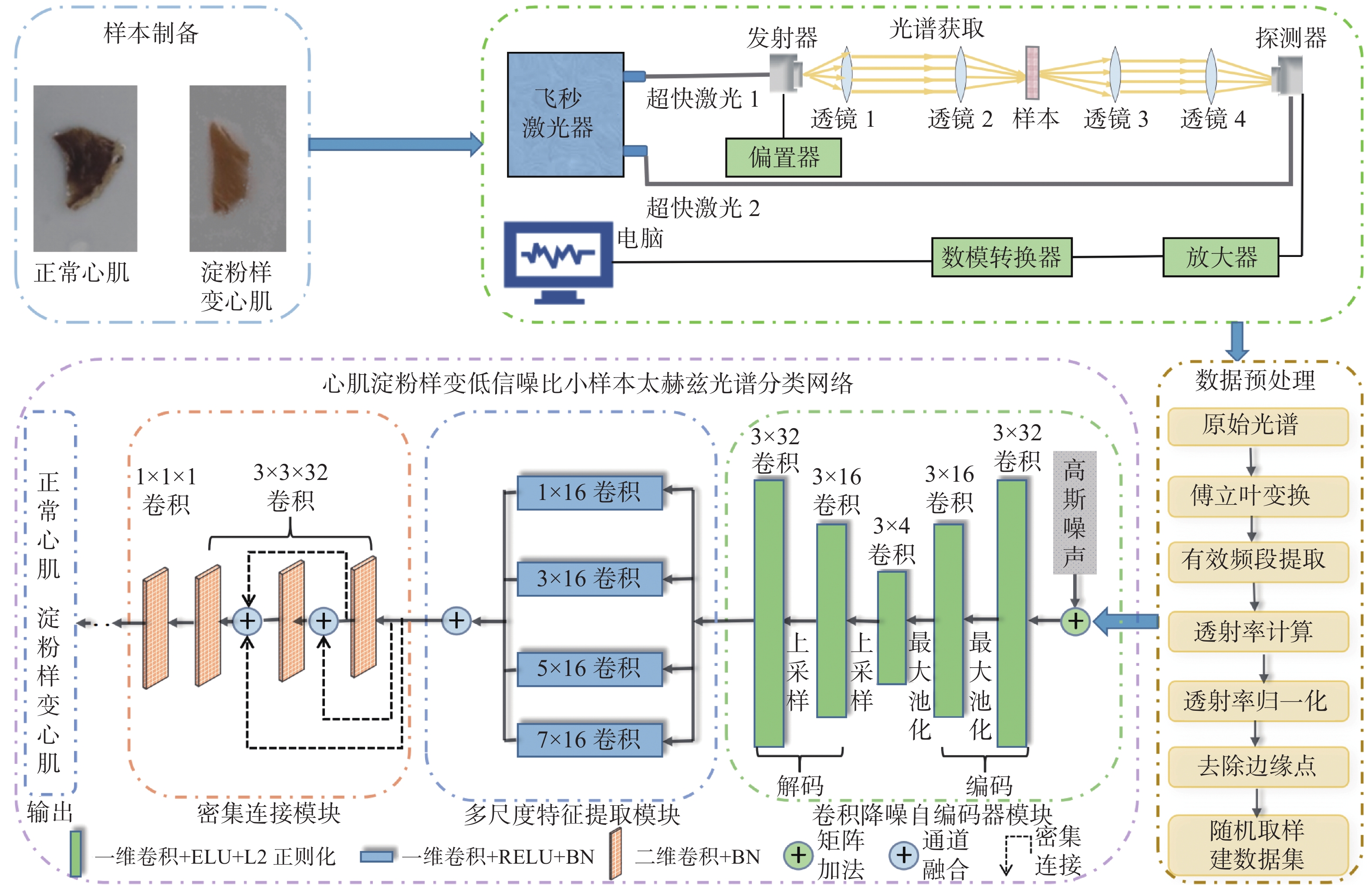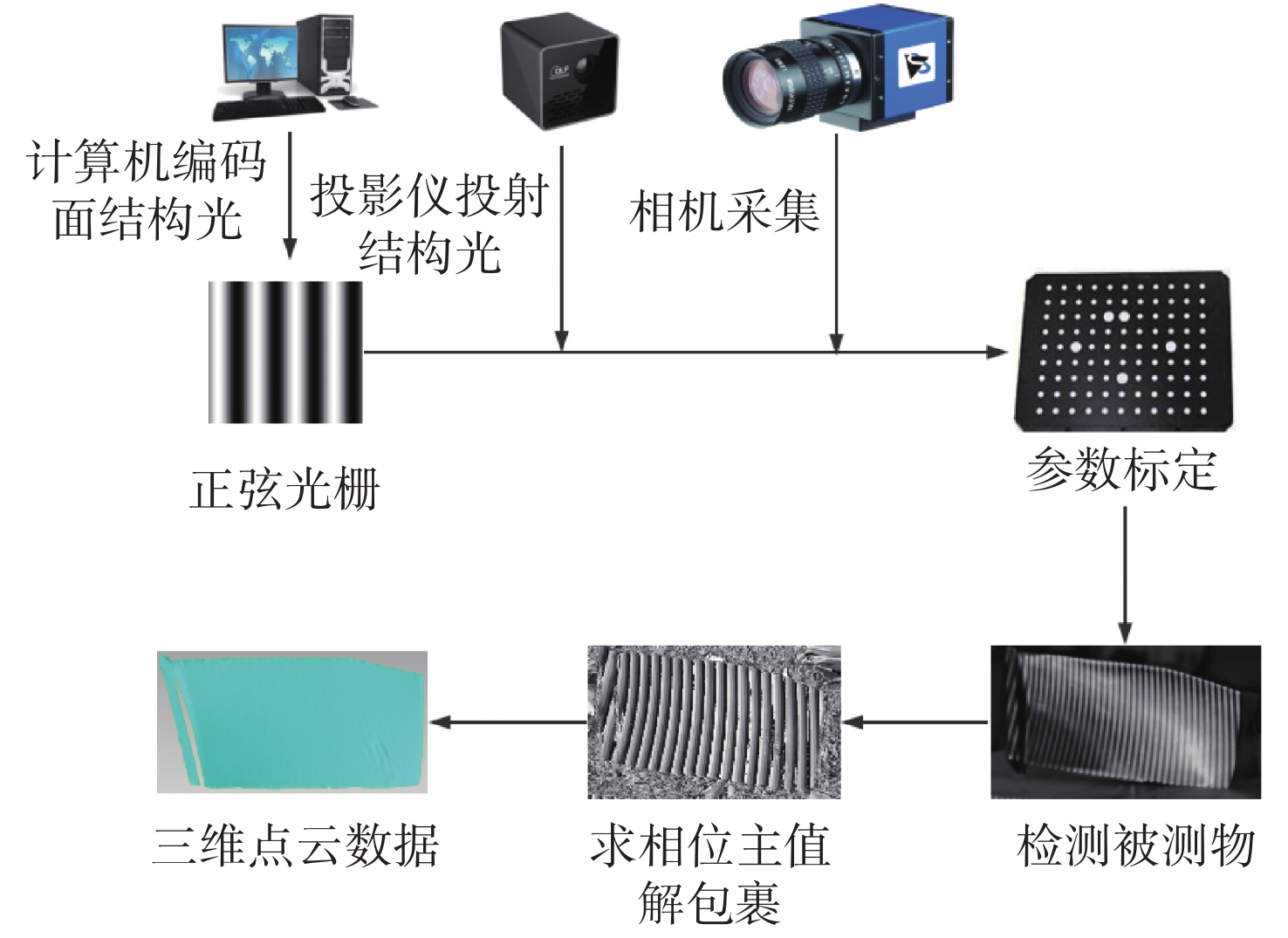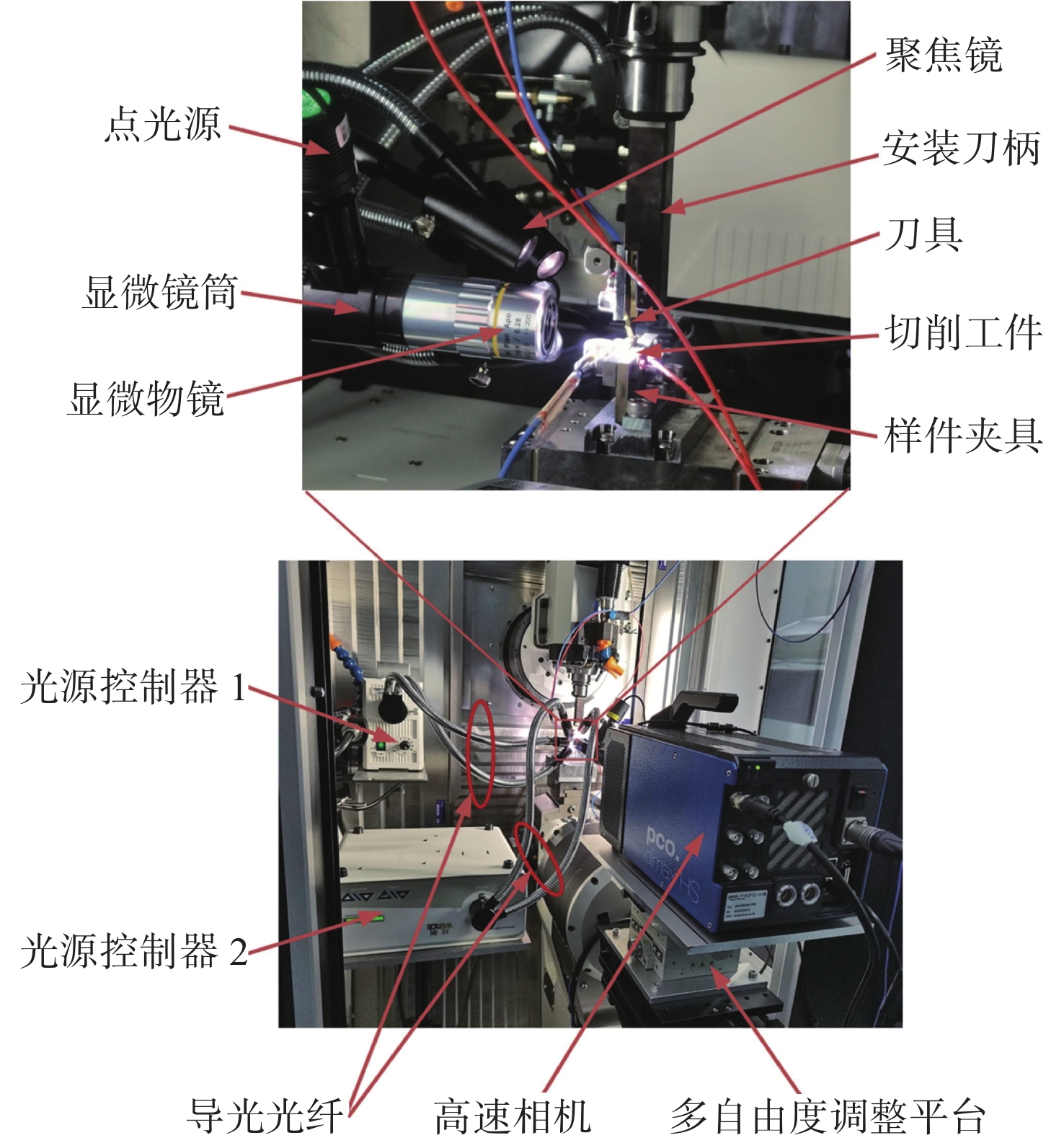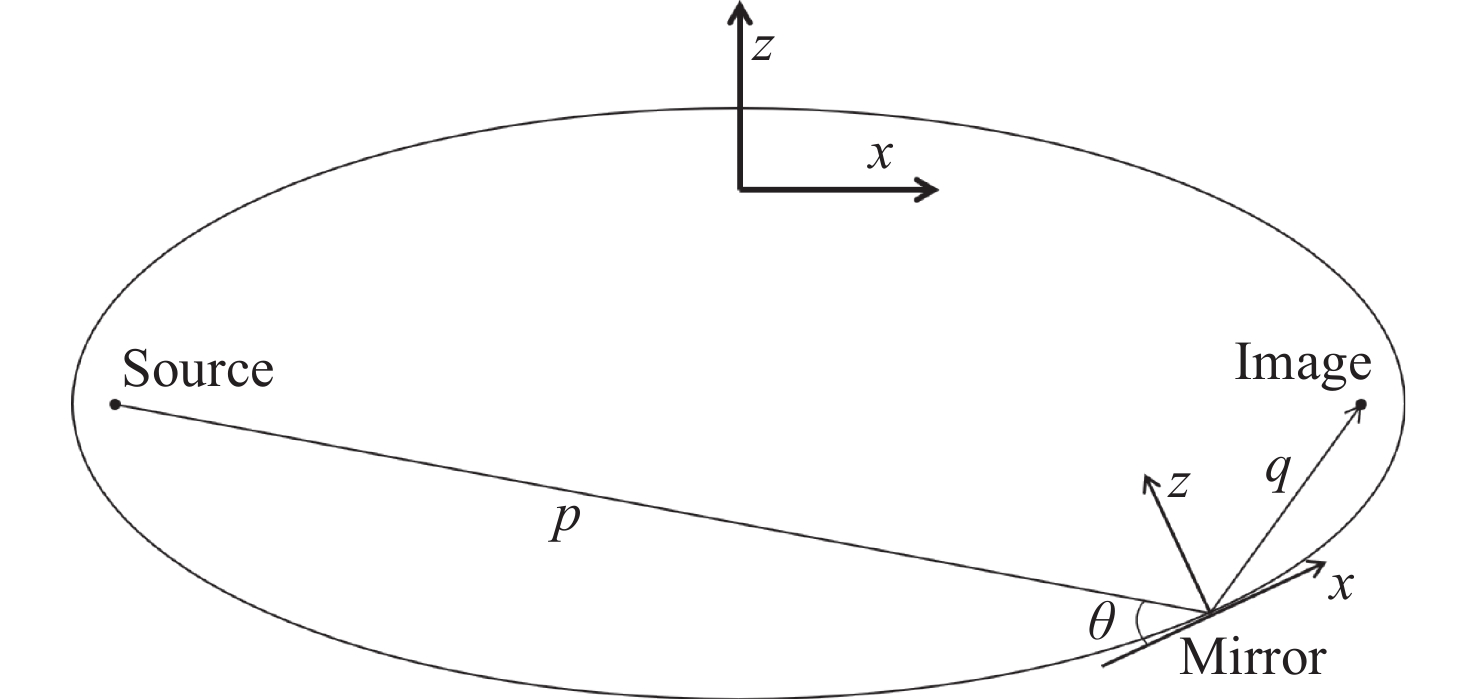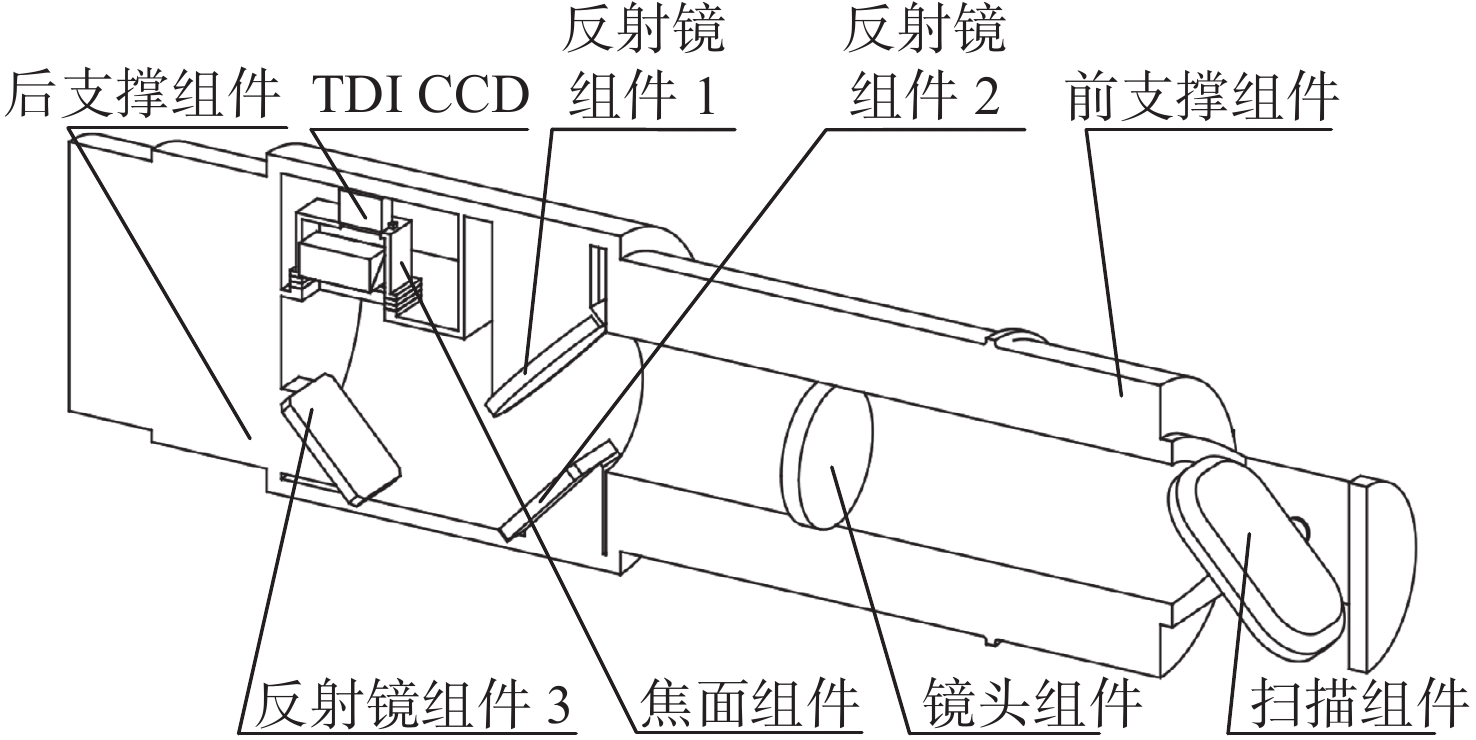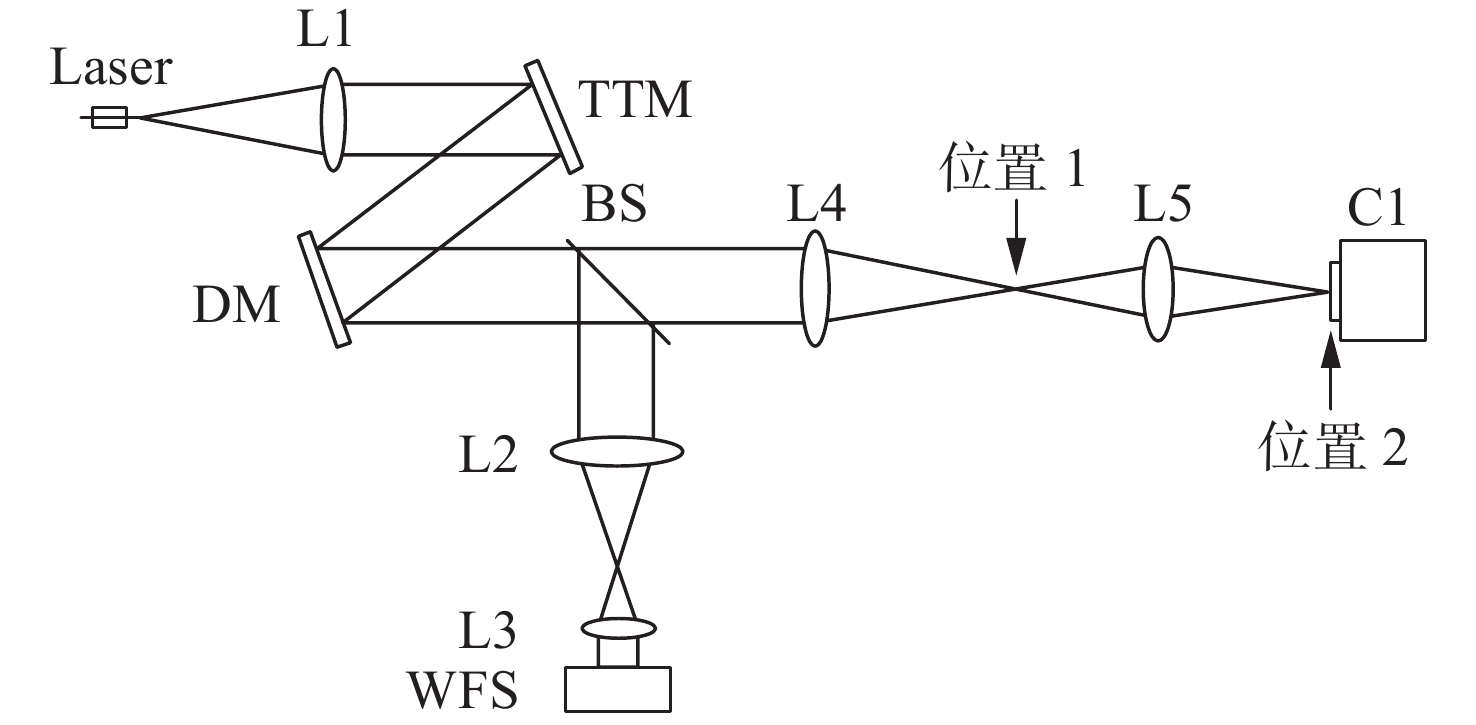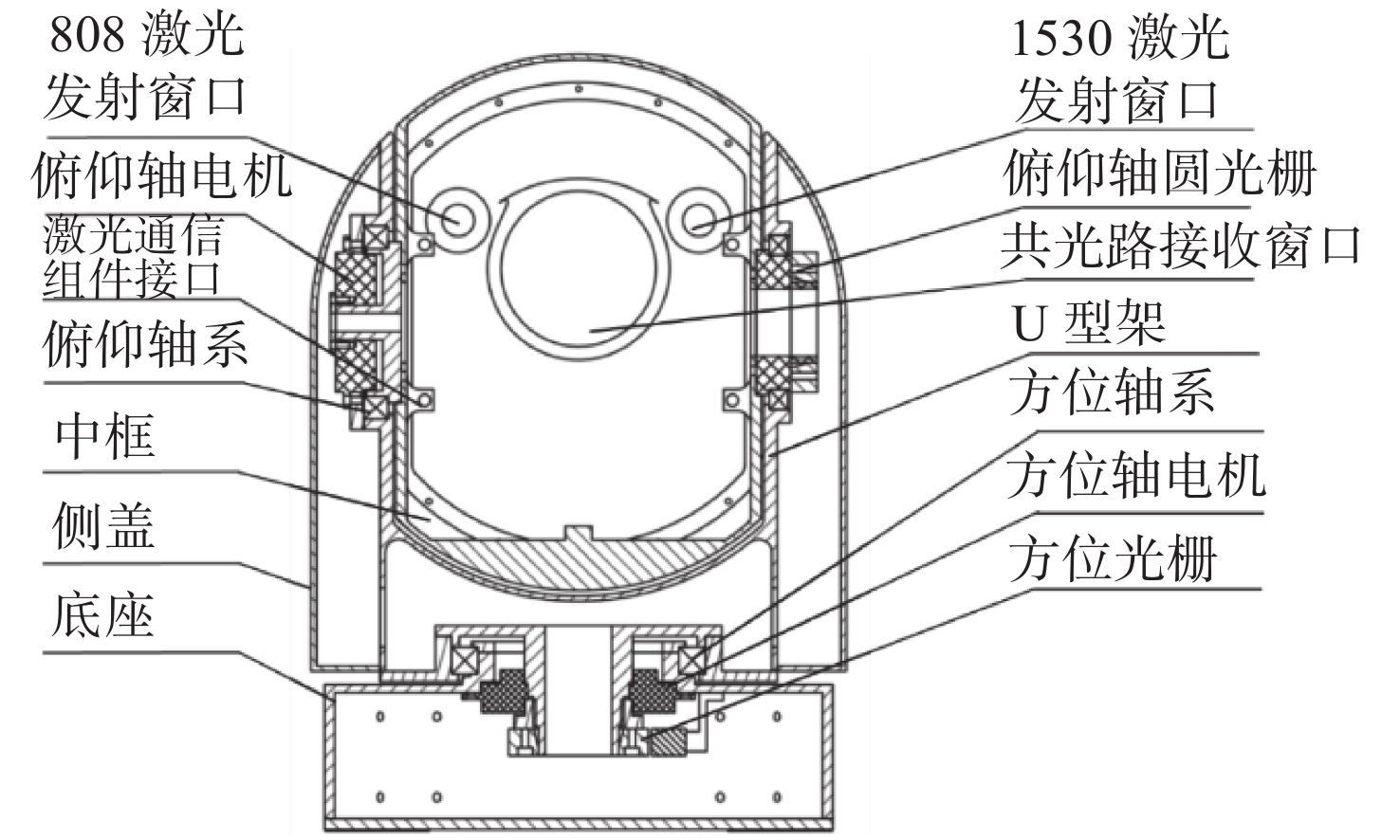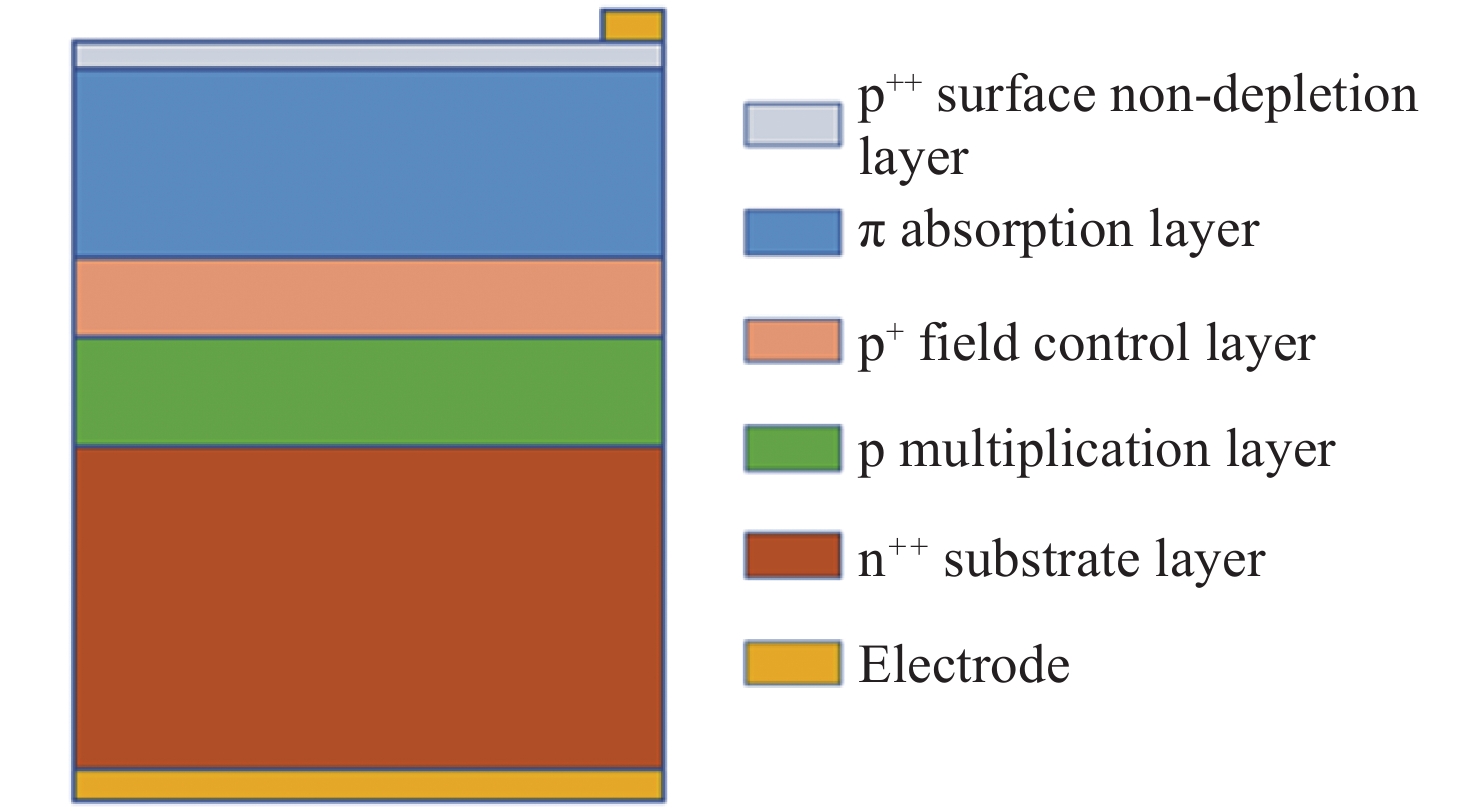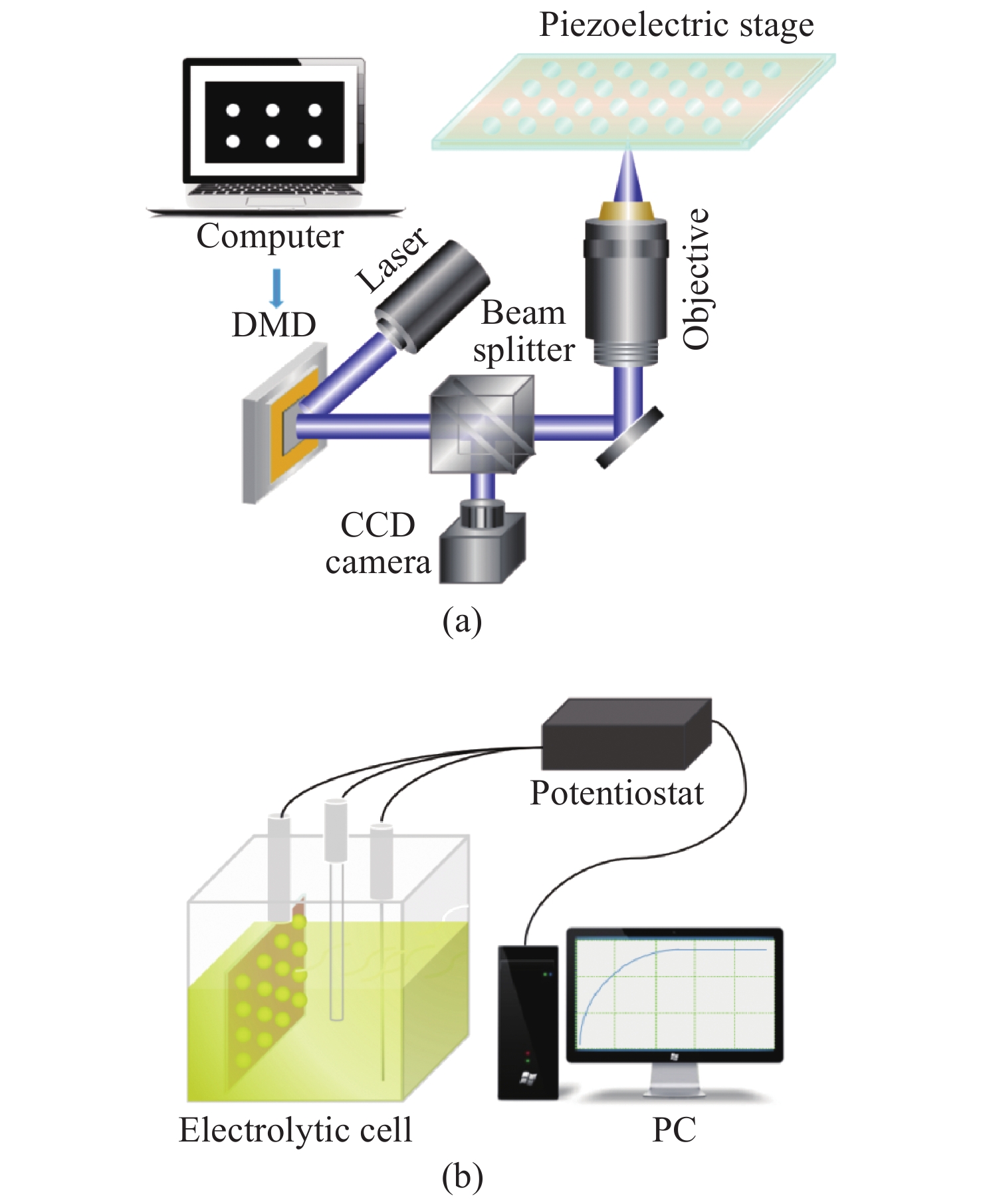2022 Vol. 15, No. 3
2022, 15(3): 405-417.
doi: 10.37188/CO.2021-0198
cstr: 32171.14.CO.2021-0198
Abstract:
Terahertz (THz) imaging technology has recently become one of the most cutting-edge technologies in many fields and has made great progress in its development over the past two decades. With the increasing demands of scientific research, medical treatment, military and industrial applications, high-resolution THz images have become indispensable. To obtain high-resolution THz images, super-resolution imaging has become a research hotspot. In this paper, the imaging methods of a THz system are reviewed, including continuous wave imaging and pulse wave imaging. On this basis, THz super-resolution imaging systems and THz signal processing technologies are described in detail. The super-resolution imaging systems include near-field imaging, super lens and terajet effect, etc. The THz signal processing technologies could be grouped as either super-resolution reconstruction and convolution calculations. Finally, the shortcomings of current super-resolution imaging technologies were discussed. There are still some bottlenecks that need to be resolved such as the high manufacturing process requirements of the system, the slow acquisition speed, and the low resolution of the learning samples used to reconstruct images. With this analysis, the research direction of super-resolution imaging is proposed.
Terahertz (THz) imaging technology has recently become one of the most cutting-edge technologies in many fields and has made great progress in its development over the past two decades. With the increasing demands of scientific research, medical treatment, military and industrial applications, high-resolution THz images have become indispensable. To obtain high-resolution THz images, super-resolution imaging has become a research hotspot. In this paper, the imaging methods of a THz system are reviewed, including continuous wave imaging and pulse wave imaging. On this basis, THz super-resolution imaging systems and THz signal processing technologies are described in detail. The super-resolution imaging systems include near-field imaging, super lens and terajet effect, etc. The THz signal processing technologies could be grouped as either super-resolution reconstruction and convolution calculations. Finally, the shortcomings of current super-resolution imaging technologies were discussed. There are still some bottlenecks that need to be resolved such as the high manufacturing process requirements of the system, the slow acquisition speed, and the low resolution of the learning samples used to reconstruct images. With this analysis, the research direction of super-resolution imaging is proposed.
2022, 15(3): 418-425.
doi: 10.37188/CO.2021-0203
cstr: 32171.14.CO.2021-0203
Abstract:
The structure model (${\rm{ACG}}^{K_1}$ CB)NCGKC(${\rm{BCG}}^{K_2}$ CA)M of photonic crystal with graphene defect is constructed and the modulation effect of graphene defects on the light absorption characteristics of photonic crystals is studied by transfer matrix method and computer simulation. When graphene defect are introduced into the photonic crystal, the optical absorptivity of the photonic crystal are enhanced and an obvious narrow-band absorption peak appears. With the increase of period number M or K2, the optical absorptivity increases. When M=6, the absorptivity is 96.55%, when K2=4, the absorptivity is 43.30%. The absorption peak moves towards the short wave with the increase of M while towards the long wave with the increase of K2. With the increase of the period number K, the light absorption of photonic crystal increases to the maximum value first and then decreases, and the absorption peak moves towards the short wave. As dA, the thickness of A medium layer (monatomic silicon) increases, the optical absorptivity of photonic crystal is enhanced. When dA=178.25 nm, the absorptivity is 48.54%, and the absorption peak moves to the long wave direction; With the increase of the thickness dB of B (carbon tetrachloride) and dC of C (gallium arsenide) dielectric layer, the optical absorptivity of photonic crystals decreases. When dB=178.25 nm, the absorptivity is 33.12%, when dC=155.25 nm, the absorptivity is 25.89%, and the absorption peak moves to long wave direction. With the increase of incident angle θ, the optical absorptivity of photonic crystal first increases to the maximum and then decreases, and the absorption peak moves in the short wave direction. The result shows that graphene defects have a good modulation effect on the light absorption characteristics of photonic crystals, which provides a theoretical reference for the research and selection of novel optical absorbers, filters and total reflectors.
The structure model (
2022, 15(3): 426-432.
doi: 10.37188/CO.2021-0200
cstr: 32171.14.CO.2021-0200
Abstract:
Catastrophic Optical Mirror Damage (COMD) on the cavity surface is one of the main factors that restrict the output power and reliability of semiconductor lasers. Quantum well intermixing technology is one of the most commonly used methods to avoid COMD. Si impurity-induced quantum well intermixing technology is explored for high-power, high-reliability laser diode devices. In this paper, a silicon dielectric layer is used as the diffusion source for a study of silicon impurity-induced disordering by annealing in a tube furnace. The effects of the dielectric film thickness, annealing conditions, quantum barrier material and sacrificial layer material on the wavelength blue shift of InGaAs/GaAs(P) quantum wells were analyzed. It is found that the degree of intermixing between quantum well and barrier increases with the increasing of annealing time and temperature, but is particularly sensitive to temperature. The wavelength blue shift of the InGaAs/GaAsP structure is 70.5 nm under 780 ℃ annealing temperature at a duration of 10 hours. Also, the GaAsP barrier structure has a larger blue shift than the GaAs barrier, and the epitaxial layer with an InGaP sacrificial layer has a larger blue shift than the AlGaAs sacrificial layer.
Catastrophic Optical Mirror Damage (COMD) on the cavity surface is one of the main factors that restrict the output power and reliability of semiconductor lasers. Quantum well intermixing technology is one of the most commonly used methods to avoid COMD. Si impurity-induced quantum well intermixing technology is explored for high-power, high-reliability laser diode devices. In this paper, a silicon dielectric layer is used as the diffusion source for a study of silicon impurity-induced disordering by annealing in a tube furnace. The effects of the dielectric film thickness, annealing conditions, quantum barrier material and sacrificial layer material on the wavelength blue shift of InGaAs/GaAs(P) quantum wells were analyzed. It is found that the degree of intermixing between quantum well and barrier increases with the increasing of annealing time and temperature, but is particularly sensitive to temperature. The wavelength blue shift of the InGaAs/GaAsP structure is 70.5 nm under 780 ℃ annealing temperature at a duration of 10 hours. Also, the GaAsP barrier structure has a larger blue shift than the GaAs barrier, and the epitaxial layer with an InGaP sacrificial layer has a larger blue shift than the AlGaAs sacrificial layer.
2022, 15(3): 433-442.
doi: 10.37188/CO.2021-0216
cstr: 32171.14.CO.2021-0216
Abstract:
In order to realize the passively harmonic mode-locking with high repetition rate in the fiber laser. A saturable absorber (SA) based on two dimensional (2D) topological insulators material of Bismuth telluride (Bi2Te3), combining with a side-polished fiber, was fabricated by laser deposition technology in this study. This device has a modulation depth of 23.96%, nonsaturable loss of 37.77% and saturable intensity of 31.5 MW/cm2. According to the adjustment of dispersion in the whole cavity and the excellent nonlinear saturable absorb character in topological insulator materials, a self-starting mode-locking is realized successfully when this SA device is applied in the Er-doped fiber laser, with a central wavelength of 1555.67 nm, pulse duration of 487 fs, repetition rate of 47.87 MHz and signal-to-noise ratio of 58 dB. A harmonic mode-locking is achieved when the pump power is over 150 mW. When we adjust and increase slightly the pump power till 250 mW, the harmonic mode-locking of 11 orders is achieved with the repetition rate of 528 MHz and the signal-to-noise ratio of 41.5 dB. These results demonstrate that with the evanescent field produced by the side-polished fiber, the damage threshold of materials can be improved and the passively harmonic mode-locking with high repetition rate is realized, which has a great significance for the materials in the application of ultrafast fiber laser with high repetition rate.
In order to realize the passively harmonic mode-locking with high repetition rate in the fiber laser. A saturable absorber (SA) based on two dimensional (2D) topological insulators material of Bismuth telluride (Bi2Te3), combining with a side-polished fiber, was fabricated by laser deposition technology in this study. This device has a modulation depth of 23.96%, nonsaturable loss of 37.77% and saturable intensity of 31.5 MW/cm2. According to the adjustment of dispersion in the whole cavity and the excellent nonlinear saturable absorb character in topological insulator materials, a self-starting mode-locking is realized successfully when this SA device is applied in the Er-doped fiber laser, with a central wavelength of 1555.67 nm, pulse duration of 487 fs, repetition rate of 47.87 MHz and signal-to-noise ratio of 58 dB. A harmonic mode-locking is achieved when the pump power is over 150 mW. When we adjust and increase slightly the pump power till 250 mW, the harmonic mode-locking of 11 orders is achieved with the repetition rate of 528 MHz and the signal-to-noise ratio of 41.5 dB. These results demonstrate that with the evanescent field produced by the side-polished fiber, the damage threshold of materials can be improved and the passively harmonic mode-locking with high repetition rate is realized, which has a great significance for the materials in the application of ultrafast fiber laser with high repetition rate.
2022, 15(3): 443-453.
doi: 10.37188/CO.2021-0223
cstr: 32171.14.CO.2021-0223
Abstract:
Due to the difficulty of extracting the distinguishable features of a small number of terahertz spectra with low signal-to-noise ratio; second and the over fitting problem of the deep learning model itself caused by too few samples, the application of terahertz spectra and deep learning in myocardial amyloidosis detection exists some challenges. In this paper, we propose a classification model based on multi-modules sequential cascade for real-time detection of myocardial amyloidosis at the algorithm level. Firstly, we collect a small number of low SNR terahertz spectra and preprocess them. Secondly, we construct a deep learning model based on denoising autoencoder, multi-scale feature extraction module and dense connection module. Finally, we use the 5 folds cross validation strategy to predict the lesions to obtain stable and reliable results. The results of 10 times independent repeated experiment and comparative experiment show that this method can classify the spectra with noise accurately and stably, which possesses of a better performance. Experiments under different number of samples show that this method is adaptive to the change of dataset size: an accuracy of 95% is achieved corresponding to 100 samples; when the amount of samples is only 20, the model can still achieve an accuracy of 70%. Therefore, the proposed method is of great significance for the real-time, efficient and safe diagnosis of myocardial amyloidosis.
Due to the difficulty of extracting the distinguishable features of a small number of terahertz spectra with low signal-to-noise ratio; second and the over fitting problem of the deep learning model itself caused by too few samples, the application of terahertz spectra and deep learning in myocardial amyloidosis detection exists some challenges. In this paper, we propose a classification model based on multi-modules sequential cascade for real-time detection of myocardial amyloidosis at the algorithm level. Firstly, we collect a small number of low SNR terahertz spectra and preprocess them. Secondly, we construct a deep learning model based on denoising autoencoder, multi-scale feature extraction module and dense connection module. Finally, we use the 5 folds cross validation strategy to predict the lesions to obtain stable and reliable results. The results of 10 times independent repeated experiment and comparative experiment show that this method can classify the spectra with noise accurately and stably, which possesses of a better performance. Experiments under different number of samples show that this method is adaptive to the change of dataset size: an accuracy of 95% is achieved corresponding to 100 samples; when the amount of samples is only 20, the model can still achieve an accuracy of 70%. Therefore, the proposed method is of great significance for the real-time, efficient and safe diagnosis of myocardial amyloidosis.
2022, 15(3): 454-463.
doi: 10.37188/CO.2021-0208
cstr: 32171.14.CO.2021-0208
Abstract:
In order to identify the elliptical components of space target, an ellipse detection method based on adaptive optical image is proposed. Firstly, the RL(Richardson-Lucy) method is used to restore the adaptive optics image. Next, the Arc-Support Line Segments (ASLS) method is used to detect the ellipse of the restored image. To tackle the problems of “arc segment over segmentation” and “semantic information difference” caused by Canny edge extraction, an improved edge extraction algorithm based on Multiscale Combinatorial Grouping (MCG) is proposed. Finally, for some false ellipses produced by using verification methods such as goodness measurement, a variety of geometric constraint measurement are comprehensively used to effectively eliminate the false ellipse. The experimental results show that the detection error of ellipse center point, the semi-major axis error and the direction angle error are less than 3 pixels, 4 pixels and 3 degrees, respectively. When the overlap area threshold is 0.65, the accuracy rate of this algorithm is 85.7%, the recall rate is 93.3% and the F value is 0.893. Our method is better than the traditional ellipse detection algorithms.
In order to identify the elliptical components of space target, an ellipse detection method based on adaptive optical image is proposed. Firstly, the RL(Richardson-Lucy) method is used to restore the adaptive optics image. Next, the Arc-Support Line Segments (ASLS) method is used to detect the ellipse of the restored image. To tackle the problems of “arc segment over segmentation” and “semantic information difference” caused by Canny edge extraction, an improved edge extraction algorithm based on Multiscale Combinatorial Grouping (MCG) is proposed. Finally, for some false ellipses produced by using verification methods such as goodness measurement, a variety of geometric constraint measurement are comprehensively used to effectively eliminate the false ellipse. The experimental results show that the detection error of ellipse center point, the semi-major axis error and the direction angle error are less than 3 pixels, 4 pixels and 3 degrees, respectively. When the overlap area threshold is 0.65, the accuracy rate of this algorithm is 85.7%, the recall rate is 93.3% and the F value is 0.893. Our method is better than the traditional ellipse detection algorithms.
2022, 15(3): 464-475.
doi: 10.37188/CO.2021-0194
cstr: 32171.14.CO.2021-0194
Abstract:
In the process of structured light detection, the thin-walled blade is easy to produce a strong reflection due to its low surface roughness, which affects the solution of the principal value of the fringe phase. As a result, it cannot accurately reconstruct the three-dimensional point cloud. In this paper, the blade in the machining process is taken as the research object, and an image enhancement process based on the Retinex algorithm is proposed to restore the information of the stripes in the position with the highest reflectivity. Firstly, the reflective characteristics of thin-walled blades are analyzed. The gray range and ideal gray value of the optimal exposure are calibrated experimentally. The camera response curve model of the aperture rotation angle and the image’s average gray level is determined, and the gray level interval of the optimal exposure is used as the detection condition by adjusting the aperture and exposure time. Secondly, the fringe image is processed based on the Retinex algorithm. The improved bilateral filter replaces the commonly used Gaussian filter, which effectively retains the edge information of the fringe while removing its illumination. Finally, monocular structured light detection is carried out on the thin-walled blade. The experimental results show that, for the fringe image processed by this proposed algorithm, the number of stripes detected by the Canny operator is the largest, the average growth rate of image information entropy is 18.21%, and the phase principal value error of the solution is the smallest. Through the deviation analysis with the standard point cloud detected by the handheld laser scanner, the positive and negative deviations of the point cloud are reduced to 0.0589 mm and −0.0590 mm, which are reduced by 44.6% and 44.1% compared with the deviation of the origin cloud, respectively, and the surface quality is significantly improved. The image enhancement algorithm proposed effectively suppresses the reflection of the metal surface in the process of surface structured light detection.
In the process of structured light detection, the thin-walled blade is easy to produce a strong reflection due to its low surface roughness, which affects the solution of the principal value of the fringe phase. As a result, it cannot accurately reconstruct the three-dimensional point cloud. In this paper, the blade in the machining process is taken as the research object, and an image enhancement process based on the Retinex algorithm is proposed to restore the information of the stripes in the position with the highest reflectivity. Firstly, the reflective characteristics of thin-walled blades are analyzed. The gray range and ideal gray value of the optimal exposure are calibrated experimentally. The camera response curve model of the aperture rotation angle and the image’s average gray level is determined, and the gray level interval of the optimal exposure is used as the detection condition by adjusting the aperture and exposure time. Secondly, the fringe image is processed based on the Retinex algorithm. The improved bilateral filter replaces the commonly used Gaussian filter, which effectively retains the edge information of the fringe while removing its illumination. Finally, monocular structured light detection is carried out on the thin-walled blade. The experimental results show that, for the fringe image processed by this proposed algorithm, the number of stripes detected by the Canny operator is the largest, the average growth rate of image information entropy is 18.21%, and the phase principal value error of the solution is the smallest. Through the deviation analysis with the standard point cloud detected by the handheld laser scanner, the positive and negative deviations of the point cloud are reduced to 0.0589 mm and −0.0590 mm, which are reduced by 44.6% and 44.1% compared with the deviation of the origin cloud, respectively, and the surface quality is significantly improved. The image enhancement algorithm proposed effectively suppresses the reflection of the metal surface in the process of surface structured light detection.
2022, 15(3): 476-487.
doi: 10.37188/CO.2022-0032
cstr: 32171.14.CO.2022-0032
Abstract:
In-situ observation and Digital Image Correlation (DIC) analysis have gradually been widely used in the analysis of plastic deformation in metal cutting processes and become a major means of material deformation analysis due to the intuitive and accurate process of measurement and analysis. In order to meet the demand of obtaining a large observation field and making the displacement field analysis results clear and intuitive when analyzing metal micro orthogonal cutting in-situ microscopy, we propose an improved image size compression matching algorithm to detect and compensate for the displacement deviation between image sequences, and transform the cutting condition from the workpiece to the tool to conduct the feed motion. In comparing with the normalized product correlation matching algorithm, it is concluded that the proposed image size compression matching algorithm can significantly improve the execution efficiency and achieve high search accuracy at the same time. Finally, two images are extracted from the image sequence, and the displacement deviation compensation and DIC analysis of the displacement field in the deformation zone are performed. It is concluded that the compensation method in this paper can effectively compensate for the displacement deviation caused by the feed motion of the workpiece and the vibration in the external environment, and make the relative motion trend between the sample materials in the deformation zone displacement field analysis more intuitive.
In-situ observation and Digital Image Correlation (DIC) analysis have gradually been widely used in the analysis of plastic deformation in metal cutting processes and become a major means of material deformation analysis due to the intuitive and accurate process of measurement and analysis. In order to meet the demand of obtaining a large observation field and making the displacement field analysis results clear and intuitive when analyzing metal micro orthogonal cutting in-situ microscopy, we propose an improved image size compression matching algorithm to detect and compensate for the displacement deviation between image sequences, and transform the cutting condition from the workpiece to the tool to conduct the feed motion. In comparing with the normalized product correlation matching algorithm, it is concluded that the proposed image size compression matching algorithm can significantly improve the execution efficiency and achieve high search accuracy at the same time. Finally, two images are extracted from the image sequence, and the displacement deviation compensation and DIC analysis of the displacement field in the deformation zone are performed. It is concluded that the compensation method in this paper can effectively compensate for the displacement deviation caused by the feed motion of the workpiece and the vibration in the external environment, and make the relative motion trend between the sample materials in the deformation zone displacement field analysis more intuitive.
2022, 15(3): 488-497.
doi: 10.37188/CO.2021-0220
cstr: 32171.14.CO.2021-0220
Abstract:
The three-dimensional (3D) shape measurement of highly reflective surface is one of the common problems in the field of optical 3D measurement. In this paper, a 3D measurement method of highly reflective surface based on per-pixel modulation was proposed to solve the problem that the phase information could not be obtained due to overexposure. Firstly, the positions of saturated pixels were identified by the projecting maximum gray image. Then, the coordinate matching was carried out by projecting horizontal and vertical fringes under low gray-level condition, and the optimal projecting gray value of supersaturated pixels would be per-pixel modulated by combining with a new intensity mapping relationship between camera and projector. Finally, the reconstructed and adaptive fringe projection sequences were projected, phase recovery and 3D reconstruction were realized by using the multi-frequency heterodyne phase shift method. The experimental results showed that the average error and standard deviation of the proposed method were less than the measured values obtained by other methods, and compared with the traditional method, the average error was reduced by 61.9% and the standard deviation was reduced by 67.7%. The proposed method has the advantages of high modulation, fast speed and can ensure high measurement accuracy.
The three-dimensional (3D) shape measurement of highly reflective surface is one of the common problems in the field of optical 3D measurement. In this paper, a 3D measurement method of highly reflective surface based on per-pixel modulation was proposed to solve the problem that the phase information could not be obtained due to overexposure. Firstly, the positions of saturated pixels were identified by the projecting maximum gray image. Then, the coordinate matching was carried out by projecting horizontal and vertical fringes under low gray-level condition, and the optimal projecting gray value of supersaturated pixels would be per-pixel modulated by combining with a new intensity mapping relationship between camera and projector. Finally, the reconstructed and adaptive fringe projection sequences were projected, phase recovery and 3D reconstruction were realized by using the multi-frequency heterodyne phase shift method. The experimental results showed that the average error and standard deviation of the proposed method were less than the measured values obtained by other methods, and compared with the traditional method, the average error was reduced by 61.9% and the standard deviation was reduced by 67.7%. The proposed method has the advantages of high modulation, fast speed and can ensure high measurement accuracy.
2022, 15(3): 498-507.
doi: 10.37188/CO.2021-0231
cstr: 32171.14.CO.2021-0231
Abstract:
The imaging performance and measurement accuracy of infrared radiation measurement systems are seriously affected by the non-uniformity of the focal plane array. Therefore, the non-uniformity of the raw infrared image needs to be corrected by the image processing algorithm. In order to further improve the Non-Uniformity Correction (NUC) effect of cooled infrared detectors, an improved non-uniformity algorithm based on calibration is proposed in this paper. The algorithm is based on the single-point calibration and the two-point calibration NUC methods, which not only retains the consistency advantage of the two-point calibration NUC method in gain correction coefficient, but also combines the stability of the single-point calibration in the offset correction coefficient. The improved algorithm has a better correction effect. In order to verify the correction effect of the improved algorithm, a cooled medium wave infrared detector with a size of 640 pixel×512 pixel is taken as the research object, and an infrared imaging system with a pupil diameter of 25 mm is used to verify the performance of the proposed algorithm. The experimental results show that under the 1ms integral time, the single-point calibration method, the two-point calibration method and the improved algorithm correct the image's non-uniformity to 1.7833%, 0.2190% and 0.1481%, respectively. And under the 2 ms integral time,they correct the image's non-uniformity to 1.8257%, 2.2474% and 1.6546%, respectively. The improved algorithm further reduces the image's non-uniformity more effectively, so it's correction effect is better and the accuracy is higher.
The imaging performance and measurement accuracy of infrared radiation measurement systems are seriously affected by the non-uniformity of the focal plane array. Therefore, the non-uniformity of the raw infrared image needs to be corrected by the image processing algorithm. In order to further improve the Non-Uniformity Correction (NUC) effect of cooled infrared detectors, an improved non-uniformity algorithm based on calibration is proposed in this paper. The algorithm is based on the single-point calibration and the two-point calibration NUC methods, which not only retains the consistency advantage of the two-point calibration NUC method in gain correction coefficient, but also combines the stability of the single-point calibration in the offset correction coefficient. The improved algorithm has a better correction effect. In order to verify the correction effect of the improved algorithm, a cooled medium wave infrared detector with a size of 640 pixel×512 pixel is taken as the research object, and an infrared imaging system with a pupil diameter of 25 mm is used to verify the performance of the proposed algorithm. The experimental results show that under the 1ms integral time, the single-point calibration method, the two-point calibration method and the improved algorithm correct the image's non-uniformity to 1.7833%, 0.2190% and 0.1481%, respectively. And under the 2 ms integral time,they correct the image's non-uniformity to 1.8257%, 2.2474% and 1.6546%, respectively. The improved algorithm further reduces the image's non-uniformity more effectively, so it's correction effect is better and the accuracy is higher.
2022, 15(3): 508-513.
doi: 10.37188/CO.2021-0179
cstr: 32171.14.CO.2021-0179
Abstract:
To meet the needs of the synchrotron radiation beamline station project under construction, a design scheme of variable cross-section bending ellipsoidal cylindrical mirror is proposed. In this scheme, the calculation formula of the slope error of the variable-section (with sagittal focus) mirror is deduced based on the design theory of variable-width bending ellipticalcylindrical focusing mirrors , and the design is optimized. This project is designed based on the optical parameters of the focusing lens (object distance p, image distance q and grazing incidence angle θ), and the design error of mirror is calculated by finite element analysis software. The results show that within the given requirements, the optimal widths at both ends of the mirror are 49.5 mm and 90.5 mm. After calculating, simulating and optimizing, the slope error RMS value of the bending moments at both ends of the mirror is reduced from ~5.1368 μrad to ~0.0636 μrad (at 1 m of length), close to the system error ~0.0407 μrad, meeting the design requirements.
To meet the needs of the synchrotron radiation beamline station project under construction, a design scheme of variable cross-section bending ellipsoidal cylindrical mirror is proposed. In this scheme, the calculation formula of the slope error of the variable-section (with sagittal focus) mirror is deduced based on the design theory of variable-width bending ellipticalcylindrical focusing mirrors , and the design is optimized. This project is designed based on the optical parameters of the focusing lens (object distance p, image distance q and grazing incidence angle θ), and the design error of mirror is calculated by finite element analysis software. The results show that within the given requirements, the optimal widths at both ends of the mirror are 49.5 mm and 90.5 mm. After calculating, simulating and optimizing, the slope error RMS value of the bending moments at both ends of the mirror is reduced from ~5.1368 μrad to ~0.0636 μrad (at 1 m of length), close to the system error ~0.0407 μrad, meeting the design requirements.
2022, 15(3): 514-524.
doi: 10.37188/CO.2021-0181
cstr: 32171.14.CO.2021-0181
Abstract:
Because the chromatic confocal technique has no axial scanning, high measurement speed, high precision, good axial tomography ability, and good axial resolution ability, it is widely used in industrial fields such as height measurement and transparent specimen thickness measurement. However, most chromatic confocal systems are coaxial illumination structures in which the illumination optical axis and imaging optical axis are perpendicular to the tested specimen which reduces its signal-to-noise ratio and light energy utility. However, the existing inclined illumination system has high light spot drift on the imaging surface, and the measurement accuracy and application range are limited. To overcome the above shortcomings, a chromatic confocal measurement method with inclined illumination is proposed in this paper. The "V-shaped" structure is changed to a triaxial structure, and the drift of the light spot is limited by adding an adjusting branch. Also, an array color camera is used as the photoelectric receiving device, and the height value is obtained by the light spot’s color processed by a color conversion algorithm. In this study, the calibration experiment was first carried out to determine the measurement range and accuracy of the device. Then, the self-made steps and transparent specimens were measured and the corresponding measured values were determined. In order to better verify the performance of the improved system under unchanged conditions, the V-shaped system was used for comparison. The experimental results show that the axial measurement range of the system is 350 μm, and the repeatability is greater than 1.69 μm. The axial measurement accuracy can reach the micron level and the system is highly capable of measuring the thickness of transparent specimens. Through comparison, it can be verified that the system has a good suppression effect on spot drift, and the measurement accuracy of the system has been significantly improved after suppression.
Because the chromatic confocal technique has no axial scanning, high measurement speed, high precision, good axial tomography ability, and good axial resolution ability, it is widely used in industrial fields such as height measurement and transparent specimen thickness measurement. However, most chromatic confocal systems are coaxial illumination structures in which the illumination optical axis and imaging optical axis are perpendicular to the tested specimen which reduces its signal-to-noise ratio and light energy utility. However, the existing inclined illumination system has high light spot drift on the imaging surface, and the measurement accuracy and application range are limited. To overcome the above shortcomings, a chromatic confocal measurement method with inclined illumination is proposed in this paper. The "V-shaped" structure is changed to a triaxial structure, and the drift of the light spot is limited by adding an adjusting branch. Also, an array color camera is used as the photoelectric receiving device, and the height value is obtained by the light spot’s color processed by a color conversion algorithm. In this study, the calibration experiment was first carried out to determine the measurement range and accuracy of the device. Then, the self-made steps and transparent specimens were measured and the corresponding measured values were determined. In order to better verify the performance of the improved system under unchanged conditions, the V-shaped system was used for comparison. The experimental results show that the axial measurement range of the system is 350 μm, and the repeatability is greater than 1.69 μm. The axial measurement accuracy can reach the micron level and the system is highly capable of measuring the thickness of transparent specimens. Through comparison, it can be verified that the system has a good suppression effect on spot drift, and the measurement accuracy of the system has been significantly improved after suppression.
2022, 15(3): 525-533.
doi: 10.37188/CO.2021-0202
cstr: 32171.14.CO.2021-0202
Abstract:
The moon is an ideal on-orbit radiation calibration source. In order to improve the measurement accuracy of long-wave infrared radiation for satellites and other on-orbit aircrafts, the characteristics of lunar long-wave infrared radiation are studied in this paper. The law of lunar long-wave infrared radiation is explored taking the moon as a point target or disk target, and the calibration accuracy is calculated based on the measured space-based data by analyzing the types of lunar radiation sources and radiation detection mechanism, and by establishing a radiation detection model. First, the lunar radiation is studied from two aspects of lunar self radiation and reflected solar radiation. The lunar surface temperature is fitted accurately, the lunar infrared radiation model is established, and the mathematical relationship is simulated between the radiation measurement results of space-based satellites and the lunar phase angles. Second, the key parameters of conversion between gray-scale and irradiation images are obtained through calibrating the radiation of satellite infrared loads in the ground. The lunar long-wave infrared radiation measurement model is then established. Finally, the reflectance and emissivity of the lunar surface are calculated based on the measured data taken by the “Jilin-1” satellite on the moon. The experimental results show that the long-wave infrared radiation characteristics of the lunar surface obtained by the proposed menthod are accurate and robust. Moreover, there are nearly 7.18% and 5.71% of the fitting errors in the obtained data compared with Apollo 12070 laboratory measurement results and diviner measured data, respectively.
The moon is an ideal on-orbit radiation calibration source. In order to improve the measurement accuracy of long-wave infrared radiation for satellites and other on-orbit aircrafts, the characteristics of lunar long-wave infrared radiation are studied in this paper. The law of lunar long-wave infrared radiation is explored taking the moon as a point target or disk target, and the calibration accuracy is calculated based on the measured space-based data by analyzing the types of lunar radiation sources and radiation detection mechanism, and by establishing a radiation detection model. First, the lunar radiation is studied from two aspects of lunar self radiation and reflected solar radiation. The lunar surface temperature is fitted accurately, the lunar infrared radiation model is established, and the mathematical relationship is simulated between the radiation measurement results of space-based satellites and the lunar phase angles. Second, the key parameters of conversion between gray-scale and irradiation images are obtained through calibrating the radiation of satellite infrared loads in the ground. The lunar long-wave infrared radiation measurement model is then established. Finally, the reflectance and emissivity of the lunar surface are calculated based on the measured data taken by the “Jilin-1” satellite on the moon. The experimental results show that the long-wave infrared radiation characteristics of the lunar surface obtained by the proposed menthod are accurate and robust. Moreover, there are nearly 7.18% and 5.71% of the fitting errors in the obtained data compared with Apollo 12070 laboratory measurement results and diviner measured data, respectively.
2022, 15(3): 534-544.
doi: 10.37188/CO.2021-0187
cstr: 32171.14.CO.2021-0187
Abstract:
It is a common design method to reduce the volume and mass of aerial remote sensors by using the plane mirror to replace the light path. However, the introduction of a plane mirror puts forward stricter requirements for the alignment of the aerial remote sensor. We propose an alignment method for the plane mirror system of an aerial remote sensor. The mathematical model of the theodolite measurement is established by the coordinate transformation method, and the corresponding relationship between the angular deviation (pitch deviation and azimuth deviation) of the single plane mirror assembly and plane mirror system and the measured value of the theodolite is deduced. Then a method of measuring and adjusting the angle deviation of the plane mirror system with theodolite is proposed. Finally, the pitch angle deviation and azimuth angle deviation between the lens optical axis and the normal of the focal plane mounting surface meet the index requirements of being no more than 2′. More than 10 sets of aerial remote sensor plane mirror systems have been aligned using this method, which is both convenient and efficient. At the same time, this method can provide a solution for the angle calibration and alignment of the plane mirror in various optical instruments.
It is a common design method to reduce the volume and mass of aerial remote sensors by using the plane mirror to replace the light path. However, the introduction of a plane mirror puts forward stricter requirements for the alignment of the aerial remote sensor. We propose an alignment method for the plane mirror system of an aerial remote sensor. The mathematical model of the theodolite measurement is established by the coordinate transformation method, and the corresponding relationship between the angular deviation (pitch deviation and azimuth deviation) of the single plane mirror assembly and plane mirror system and the measured value of the theodolite is deduced. Then a method of measuring and adjusting the angle deviation of the plane mirror system with theodolite is proposed. Finally, the pitch angle deviation and azimuth angle deviation between the lens optical axis and the normal of the focal plane mounting surface meet the index requirements of being no more than 2′. More than 10 sets of aerial remote sensor plane mirror systems have been aligned using this method, which is both convenient and efficient. At the same time, this method can provide a solution for the angle calibration and alignment of the plane mirror in various optical instruments.
2022, 15(3): 545-551.
doi: 10.37188/CO.2021-0182
cstr: 32171.14.CO.2021-0182
Abstract:
A key factor limiting the performance of Adaptive Optics (AO) systems is the Non-Common Path Aberration (NCPA) caused by the difference between the wavefront sensor path and the science imaging path. Meanwhile, a static aberration will inevitably be introduced in the common path of the AO system. This paper proposes a correction technology based on a copy of the focal-plane Point Spread Function (PSF) to correct static aberration in the scientific imaging path of AO systems. This technology uses the PSF generated by the laser point light source as the reference PSF, and copies that to the science imaging path of the AO system through iterative optimization algorithms. Experimental results show that the Strehl Ratio (SR) increases from the initial 0.312 to 0.995 after correction. This technology can still stably and quickly obtain global optimization results, especially when the initial static aberration of the system is large.
A key factor limiting the performance of Adaptive Optics (AO) systems is the Non-Common Path Aberration (NCPA) caused by the difference between the wavefront sensor path and the science imaging path. Meanwhile, a static aberration will inevitably be introduced in the common path of the AO system. This paper proposes a correction technology based on a copy of the focal-plane Point Spread Function (PSF) to correct static aberration in the scientific imaging path of AO systems. This technology uses the PSF generated by the laser point light source as the reference PSF, and copies that to the science imaging path of the AO system through iterative optimization algorithms. Experimental results show that the Strehl Ratio (SR) increases from the initial 0.312 to 0.995 after correction. This technology can still stably and quickly obtain global optimization results, especially when the initial static aberration of the system is large.
2022, 15(3): 552-561.
doi: 10.37188/CO.2021-0213
cstr: 32171.14.CO.2021-0213
Abstract:
In this study, the gradient characteristic of field-induced reorientation of nematic liquid crystal was investigated to accurately analyze the Polarization Conversion Length (PCL) and Polarization Conversion Efficiency (PCE) of an electronically controlled polarization rotator based on a liquid crystal optical waveguide. Firstly, according to the eigenvalue equation obtained from the liquid crystal magnetic field coupling equations, the corresponding relationship between PCL and the applied voltage was constructed. Then, the explicit expression of the iterative equations of the Alternating Direction Implicit Beam Propagation Method (ADI-BPM) was obtained by transverse finite-difference discretization of the electric field transmission equation, which was used to solve the propagation field in the liquid crystal optical waveguide and calculate the PCE. Finally, the eigenmode and propagation field were solved through a simulation experiment, and then the effects of the gradient characteristics of the liquid crystal director on PCL and PCE were analyzed. The results show that the effect of the gradient of the liquid crystal director on the PCL can be ignored, but the maximum PCE is about 20% lower than that of the uniform reorientation of the liquid crystal. This result will provide a certain theoretical reference for the practical development of an electronically controlled polarization rotator based on a liquid crystal optical waveguide.
In this study, the gradient characteristic of field-induced reorientation of nematic liquid crystal was investigated to accurately analyze the Polarization Conversion Length (PCL) and Polarization Conversion Efficiency (PCE) of an electronically controlled polarization rotator based on a liquid crystal optical waveguide. Firstly, according to the eigenvalue equation obtained from the liquid crystal magnetic field coupling equations, the corresponding relationship between PCL and the applied voltage was constructed. Then, the explicit expression of the iterative equations of the Alternating Direction Implicit Beam Propagation Method (ADI-BPM) was obtained by transverse finite-difference discretization of the electric field transmission equation, which was used to solve the propagation field in the liquid crystal optical waveguide and calculate the PCE. Finally, the eigenmode and propagation field were solved through a simulation experiment, and then the effects of the gradient characteristics of the liquid crystal director on PCL and PCE were analyzed. The results show that the effect of the gradient of the liquid crystal director on the PCL can be ignored, but the maximum PCE is about 20% lower than that of the uniform reorientation of the liquid crystal. This result will provide a certain theoretical reference for the practical development of an electronically controlled polarization rotator based on a liquid crystal optical waveguide.
2022, 15(3): 562-567.
doi: 10.37188/CO.2022-0090
cstr: 32171.14.CO.2022-0090
Abstract:
In order to improve the tracking stability and accuracy of photoelectric tracking control system, the control method of photoelectric tracking servo system is studied in this paper. Firstly, in order to meet the requirements of system function and performance index, the structure of the servo turntable is designed. Then, the linear Active Disturbance Rejection Control (ADRC) algorithm is designed, tracking differentiator and the linear extended state observer and state error feedback control law are obtained. Then, the model of tracking servo system based on ADRC algorithm is established with Matlab/Simulink, in which the position loop and speed loop adopt the second-order ADRC strategy, and the current loop adopts the PI control strategy. The simulation results show that zero overshoots can be realized during positioning tracking, and the fastest response speed can be achieved. When sudden disturbance is added, the maximum value of dynamic landing is 3%, and the sinusoidal tracking error can reach 0.02°, demonstrating that the photoelectric tracking control system based on ADRC algorithm has good results in fast response, steady-state accuracy and anti-interference performance.
In order to improve the tracking stability and accuracy of photoelectric tracking control system, the control method of photoelectric tracking servo system is studied in this paper. Firstly, in order to meet the requirements of system function and performance index, the structure of the servo turntable is designed. Then, the linear Active Disturbance Rejection Control (ADRC) algorithm is designed, tracking differentiator and the linear extended state observer and state error feedback control law are obtained. Then, the model of tracking servo system based on ADRC algorithm is established with Matlab/Simulink, in which the position loop and speed loop adopt the second-order ADRC strategy, and the current loop adopts the PI control strategy. The simulation results show that zero overshoots can be realized during positioning tracking, and the fastest response speed can be achieved. When sudden disturbance is added, the maximum value of dynamic landing is 3%, and the sinusoidal tracking error can reach 0.02°, demonstrating that the photoelectric tracking control system based on ADRC algorithm has good results in fast response, steady-state accuracy and anti-interference performance.
2022, 15(3): 568-591.
doi: 10.37188/CO.2021-0188
cstr: 32171.14.CO.2021-0188
Abstract:
In order to achieve high spectral responsivity of the silicon avalanche photodiode in blue band (400−500 nm), Separated Absorption Control Multiplication (SACM) basic device structure was designed. Based on multiple physical models, the effect of the thickness on the avalanche breakdown voltage and the photocurrent gain of the device and the effect of the doping concentration of the multiplication layer on the optical responsivity were investigated. Comprehensively considering the factors of light responsivity and breakdown voltage, the results show that the device has a low breakdown voltage Vbr-apd=34.2 V when the doping concentration of the surface non-depleted layer is 1.0×1018 cm−3, and the thickness is 0.03 μm; the doping concentration of absorption layer is 1.0×1015 cm−3, the thickness is 1.3 μm, the doping concentration of field control layer is 8.0×1016 cm−3, the thickness is 0.2 μm and the doping concentration of double layer is 1.8×1016 cm−3 and the thickness is 0.5 μm. When Vapd=0.95Vbr-apd, it has higher optical responsivity in blue band, i.e. SR is 3.72~6.08 A·W−1. The above research results provide certain theoretical reference for the preparation of practical Si-APD devices with high blue light detection responsivity.
In order to achieve high spectral responsivity of the silicon avalanche photodiode in blue band (400−500 nm), Separated Absorption Control Multiplication (SACM) basic device structure was designed. Based on multiple physical models, the effect of the thickness on the avalanche breakdown voltage and the photocurrent gain of the device and the effect of the doping concentration of the multiplication layer on the optical responsivity were investigated. Comprehensively considering the factors of light responsivity and breakdown voltage, the results show that the device has a low breakdown voltage Vbr-apd=34.2 V when the doping concentration of the surface non-depleted layer is 1.0×1018 cm−3, and the thickness is 0.03 μm; the doping concentration of absorption layer is 1.0×1015 cm−3, the thickness is 1.3 μm, the doping concentration of field control layer is 8.0×1016 cm−3, the thickness is 0.2 μm and the doping concentration of double layer is 1.8×1016 cm−3 and the thickness is 0.5 μm. When Vapd=0.95Vbr-apd, it has higher optical responsivity in blue band, i.e. SR is 3.72~6.08 A·W−1. The above research results provide certain theoretical reference for the preparation of practical Si-APD devices with high blue light detection responsivity.
2022, 15(3): 592-607.
doi: 10.37188/CO.2021-0109
cstr: 32171.14.CO.2021-0109
Abstract:
In order to improve the detection efficiency of Micro Array Electrodes (MAE) and reduce the production cost, a technology combining Digital Micromirror Device (DMD) maskless projection lithography with electrochemical deposition was proposed. Firstly, a user-defined micro array was fabricated by using the advantages of lithography system such as high-resolution PZS motion and imaging flexibility of DMD. And a uniform Au microarray electrode (Au/MAE) was fabricated after obtaining an Au conducting layer by electrodeposition. Then, the electrochemical properties of Au/MAE with different structures were compared by cyclic voltammetry, and the optimized structural parameters were obtained. Finally, the current response of optimized Au/MAE to the glucose with different concentrations and pH values was studied, and the anti-interference of Au/MAE in glucose detection was tested by chronoamperometry. The electrochemical analysis shows that the simple Au/MAE has a significant amperometric response, a strong anti-interference ability and a sensitivity of 101 μA·cm−2·mM−1 in the electrochemical detection of glucose. This method has the advantages of high resolution, high consistency, simple process and low cost, which provides a feasible operation scheme for the fabrication of biosensor array.
In order to improve the detection efficiency of Micro Array Electrodes (MAE) and reduce the production cost, a technology combining Digital Micromirror Device (DMD) maskless projection lithography with electrochemical deposition was proposed. Firstly, a user-defined micro array was fabricated by using the advantages of lithography system such as high-resolution PZS motion and imaging flexibility of DMD. And a uniform Au microarray electrode (Au/MAE) was fabricated after obtaining an Au conducting layer by electrodeposition. Then, the electrochemical properties of Au/MAE with different structures were compared by cyclic voltammetry, and the optimized structural parameters were obtained. Finally, the current response of optimized Au/MAE to the glucose with different concentrations and pH values was studied, and the anti-interference of Au/MAE in glucose detection was tested by chronoamperometry. The electrochemical analysis shows that the simple Au/MAE has a significant amperometric response, a strong anti-interference ability and a sensitivity of 101 μA·cm−2·mM−1 in the electrochemical detection of glucose. This method has the advantages of high resolution, high consistency, simple process and low cost, which provides a feasible operation scheme for the fabrication of biosensor array.



 Abstract
Abstract FullText HTML
FullText HTML PDF 5252KB
PDF 5252KB




